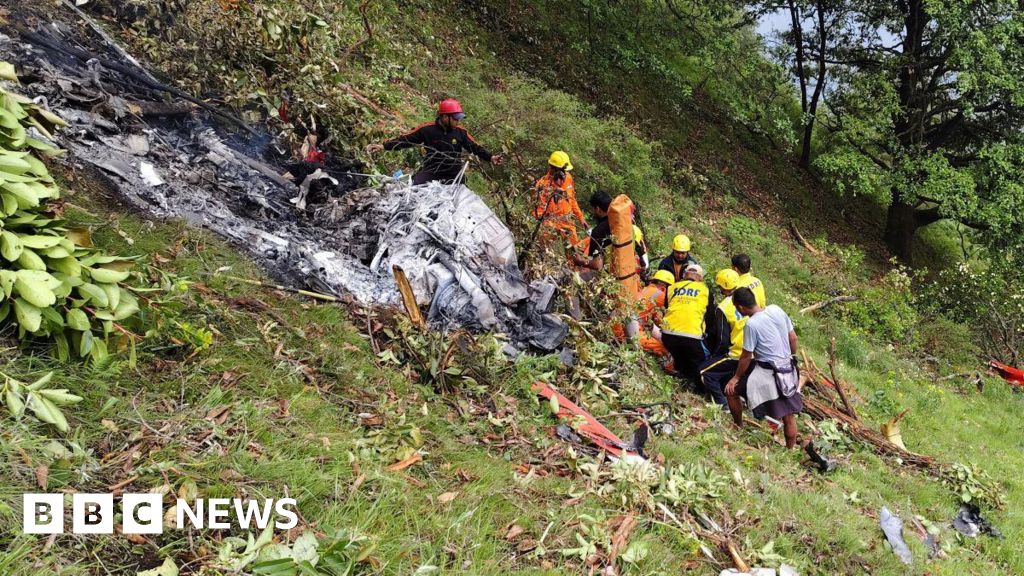 |
|
The recent helicopter crash in Uttarakhand, India, resulting in the tragic loss of seven lives, including the pilot and a two-year-old child, underscores the inherent risks associated with air travel, particularly in challenging terrains. The incident, involving an Aryan Aviation Bell 407 helicopter operating along the popular Char Dham Yatra pilgrimage route, has prompted immediate investigations and a temporary suspension of helicopter services in the region. This tragedy not only highlights the need for stringent safety measures but also raises broader questions about the regulation and oversight of helicopter operations in high-altitude environments frequented by pilgrims and tourists. The immediate aftermath of the crash saw rescue teams dispatched to retrieve the bodies, a task complicated by the mountainous terrain. The Aircraft Accident Investigation Bureau (AAIB) is now tasked with determining the cause of the crash, a process that will likely involve examining factors such as weather conditions, mechanical failures, pilot error, and adherence to safety protocols. The findings of this investigation will be crucial in preventing similar incidents in the future. The incident occurred near Gaurikund, a location significant for its proximity to the Kedarnath temple, a key destination in the Char Dham Yatra. This annual pilgrimage attracts hundreds of thousands of devotees seeking spiritual solace in the Himalayan mountains. The increasing demand for convenient access to these remote shrines has fueled the growth of helicopter charter services, catering primarily to wealthier pilgrims seeking to avoid the arduous trekking involved. However, this growth has also raised concerns about safety standards and the potential for corners to be cut in order to maximize profits. The state government of Uttarakhand, led by Chief Minister Pushkar Singh Dhami, has responded to the crash with decisive action. In addition to ordering an inquiry, Dhami has mandated a complete closure of helicopter services along the Char Dham Yatra route until a thorough review of safety procedures can be conducted. This includes a meeting with all helicopter operators to assess the flying experience of pilots operating in the high Himalayan regions. Furthermore, Dhami has called for the establishment of a strict Standard Operating Procedure (SOP) for helicopter services in the state, including the creation of a common command and coordination center in Dehradun to ensure better oversight and safer operations. The state's director-general of information, Bansidhar Tripathi, revealed that there had been multiple emergency landings and helicopter crashes along the Char Dham Yatra route in the preceding weeks, suggesting a systemic problem that requires urgent attention. This pattern of incidents raises serious questions about the adequacy of existing safety regulations and the enforcement of those regulations. The Char Dham Yatra, which encompasses the four temple towns of Badrinath, Gangotri, Yamunotri, and Kedarnath, is not only a significant religious event but also a major source of revenue for the state of Uttarakhand. The reliance on helicopter services to cater to the needs of pilgrims has created a complex web of economic interests and safety concerns. Balancing the need to facilitate pilgrimage with the imperative to ensure passenger safety is a challenge that requires careful consideration and a commitment to transparency and accountability. The investigation into the crash must be comprehensive and impartial, leaving no stone unturned in the pursuit of the truth. It is essential that the findings of the investigation are made public and that appropriate measures are taken to address any deficiencies in safety protocols or regulatory oversight. The families of the victims deserve closure, and the public deserves assurance that everything possible is being done to prevent similar tragedies in the future. The incident also highlights the broader issue of aviation safety in India, where rapid economic growth has led to a surge in air travel but regulatory infrastructure has struggled to keep pace. The Directorate General of Civil Aviation (DGCA), the regulatory body responsible for aviation safety in India, faces significant challenges in ensuring that airlines and helicopter operators adhere to the highest safety standards. These challenges include a shortage of qualified personnel, inadequate funding, and bureaucratic inefficiencies. Strengthening the DGCA and empowering it to effectively enforce safety regulations is crucial to improving aviation safety in India. The helicopter crash in Uttarakhand serves as a stark reminder of the fragility of life and the importance of prioritizing safety in all aspects of air travel. It is a call to action for the government, the aviation industry, and the public to work together to ensure that future tragedies are prevented. This requires a commitment to transparency, accountability, and a willingness to learn from past mistakes. The lives lost in this crash must not be in vain. Their memory should serve as a catalyst for meaningful change that makes air travel safer for everyone.
